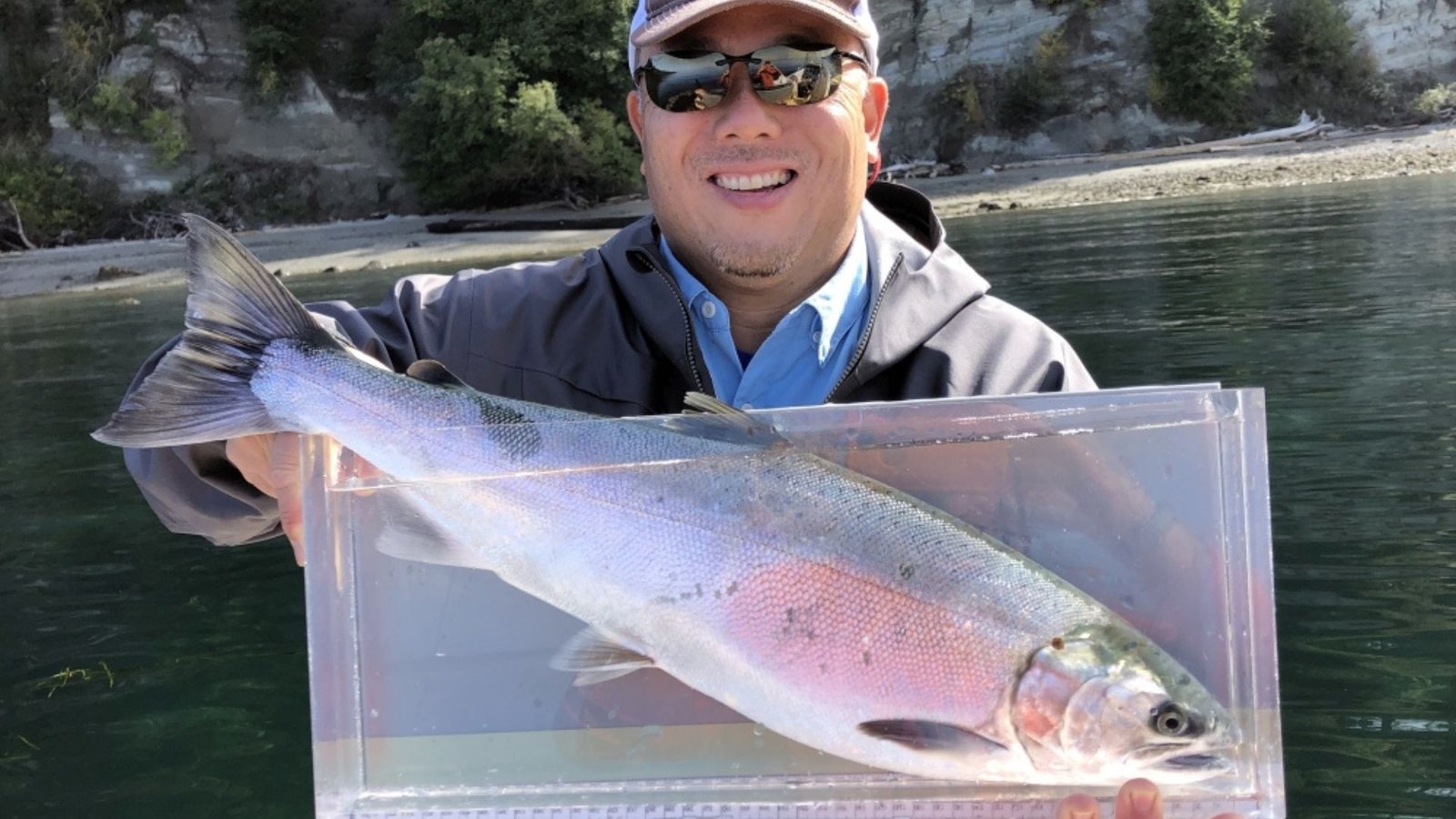Fishing salmon flies in slow-moving water demands patience, strategy, and an understanding of how salmon behave in such conditions. Here’s how to maximize your chances of success:

How to Fish Salmon Flies in Slow Water
Selecting the Right Fly
Choosing the appropriate fly is crucial when fishing in slow water. Opt for patterns that imitate insects or small fish that salmon feed on in these conditions. Flies like nymphs, small streamers, or wet flies that sink gradually can be effective.
Observing the Water
Before casting, take time to observe the slow water. Look for areas where there might be slight movement or where salmon are likely to hold, such as behind rocks, along undercut banks, or near vegetation.
Approach and Presentation
- Quiet Approach: Salmon can be sensitive to disturbances in slow water. Approach quietly to avoid spooking them.
- Cast Upstream: Cast your fly slightly upstream from the target area. Allow it to drift naturally downstream towards the salmon, mimicking the flow of food in the water.
- Mend Line: Use the mend technique to adjust the fly’s drift, ensuring it moves naturally without drag. This technique is crucial in slow water to maintain a lifelike presentation.
Patience and Timing
- Allow Drift: Let the fly drift naturally with the current. Salmon in slow water often take their time inspecting potential food sources, so be patient and avoid retrieving too quickly.
- Slow Retrieve: If necessary, retrieve the fly slowly in short, gentle pulls to imitate small prey moving in the water.
Setting the Hook
- Sensitive Response: In slow water, salmon may take the fly gently. Be alert for any slight movement or hesitation in the line, which could indicate a strike.
- Set Hook Firmly: When you feel a strike, swiftly but firmly set the hook to ensure it penetrates the salmon’s mouth.
Gear and Equipment
- Light Tackle: Use a lightweight rod and reel setup suitable for delicate presentations and finesse casting.
- Leader Length: Consider using a longer leader to minimize visibility and increase the natural presentation of your fly.
Adapt and Experiment
- Change Flies: If one pattern isn’t producing results, switch to another that matches the hatch or try different sizes and colors.
- Adjust Depth: Experiment with the depth at which your fly drifts. Adjust your leader length or add weight to the line to reach deeper water where salmon might be holding.
Environmental Factors
- Temperature and Sunlight: In slow water, salmon may be more active during cooler parts of the day or in shaded areas. Adjust your fishing times accordingly.
- Current Flow: Even in slow water, subtle currents can affect the movement of your fly. Be aware of these dynamics and adjust your casting and presentation as needed.
Tips for Success:
- Study Local Conditions: Learn about the specific slow water habitats in your fishing area to understand where salmon are likely to congregate.
- Practice Casting: Develop your casting accuracy and control to place your fly precisely where salmon are most likely to strike.
- Stay Persistent: Fishing in slow water can be challenging, but persistence and adaptability are key to success.
Fishing salmon flies in slow water requires finesse and attention to detail. By understanding salmon behavior and employing the right techniques, you can enhance your chances of hooking into a prized catch. Enjoy the process and the tranquility of fishing in slow-moving waters, and you’ll improve your skills with every outing.



